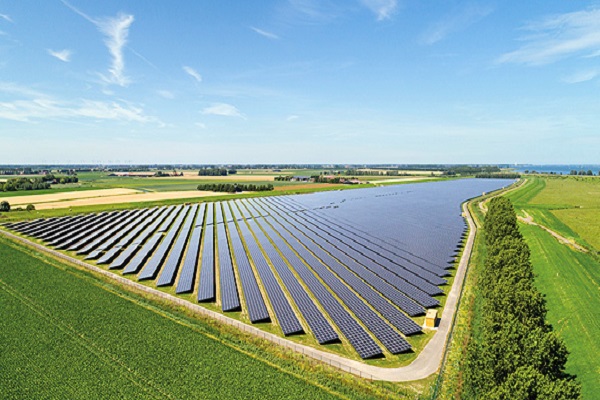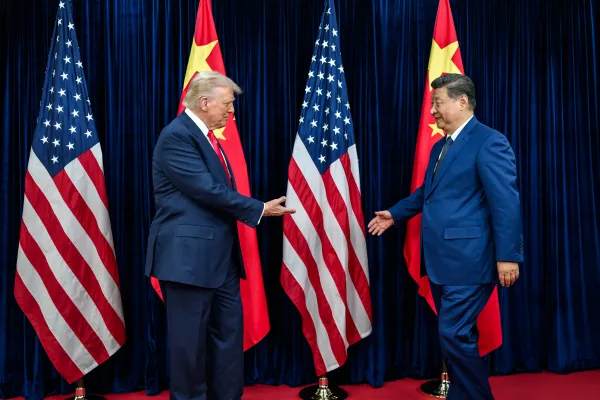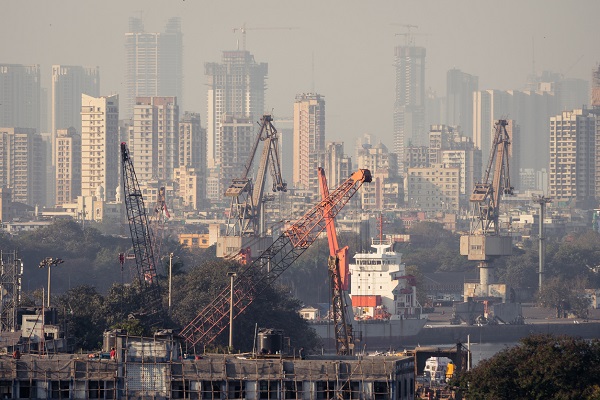.png)

Nilanjan Banik is a Professor at the School of Management, Mahindra University, specialising in trade, market structure, and development economics.
November 15, 2025 at 4:36 AM IST
With the long-awaited trade deal with the US delayed, India is deepening engagement with other developed partners such as the European Union (EU) and New Zealand to secure free trade agreements (FTAs). This shift reflects New Delhi’s intent to diversify its trade relationships and reduce dependency on any single major economy. However, to fully realise the benefits of these partnerships, India will need to integrate strong environmental standards into future FTAs to ensure sustainable and responsible growth.
As global trade increasingly prioritises sustainability, India’s commitment to renewable energy aligns well with the climate goals of its prospective partners. Its green energy credentials facilitate technology sharing, joint research, and improved access to markets with stringent environmental norms, including the EU.
India has been prioritising its green targets, signalling a firm commitment to balancing economic expansion with environmental sustainability. Over the past decade, the country has aggressively expanded its renewable energy infrastructure, positioning itself as a leader in the clean energy transition. The government’s commitment to ambitious targets such as 500 GW of renewable energy capacity by 2030 and net-zero emissions by 2070 are witnessing broad-based corporate participation.
Corporate India now accounts for a sizeable share of renewable energy demand, and its choices directly determine whether national green targets are met on schedule. The government’s annual clean-energy policies and tendering systems, supported by 100% FDI for renewables, have created fertile ground for private sector investment. Encouraging signs of this transformation are visible across sectors, from mining and metals to cement, steel, and energy, as leading Indian companies translate intent into measurable climate action.
Hindustan Zinc exemplifies how resource-intensive industries are aligning with India’s broader 2030–2050 climate roadmap by pursuing a dual strategy of reducing carbon intensity and adopting cleaner technologies. Its net-zero-by-2050 plan rests on boosting renewables, which already constitute 19% of its energy mix and are targeted to reach 70% by 2027-28. At the group level, Vedanta reflects India Inc.’s accelerating clean-energy momentum, advancing a green energy strategy across its metals, power, and oil and gas businesses. In the first quarter of 2025-26 alone, it consumed nearly 850 million units of renewable power from solar, wind, and biomass sources, one of the fastest large-scale industrial transitions in the country.
The Adani Group’s trajectory underscores the same conviction but at a system scale. Adani Green Energy operates over 16 GW of renewable capacity and is targeting 50 GW by 2030. Its hybrid solar-wind and pumped-hydro projects at Khavda in Gujarat are designed to deliver round-the-clock green power and strengthen grid reliability. Reliance Industries, meanwhile, offers a complementary strategy rooted in innovation, placing its New Energy and New Materials business at the centre of its plan to achieve net-zero carbon by 2035. Building on its earlier $10 billion commitment for clean-energy infrastructure, the company is developing an integrated ecosystems for green hydrogen, solar, wind, fuel cells, batteries, and advanced materials.
In the metals sector, Tata Steel is steadily transforming one of India’s most carbon-intensive industries into a global benchmark for circular production. The company’s recently announced 966 MW hybrid round-the-clock project with Tata Power Renewable Energy aims to green a significant segment of operations by mid-2025. Tata Steel is also expanding domestic renewables manufacturing capacity with a 2 GW solar cell and 1.2 GW module facility in Odisha. JSW Group adds yet another example of ambition backed by accountability. JSW Steel aims for a 42% CO₂-intensity cut by 2030 and is piloting green-hydrogen supply at Vijayanagar with JSW Energy. JSW Energy currently operates 13,097 MW of capacity, 57% of which is renewables, and is working toward carbon-neutrality by 2050.
These companies illustrate a broader shift in India’s industrial mindset, where sustainability is emerging as an instrument of competitiveness. Globally, a record 582 GW of renewable capacity was added in 2024, a 15% jump, though still short of the 16.6% annual growth needed to stay on a 1.5°C pathway. Against this backdrop, India’s 15–16% CAGR over the past decade stands out as a relative success and will help foster new trade alliances with the developed world. By aligning its economic ambitions with its environmental commitments, India is accelerating its domestic energy transition and preparing for a new era of sustainable global trade.




